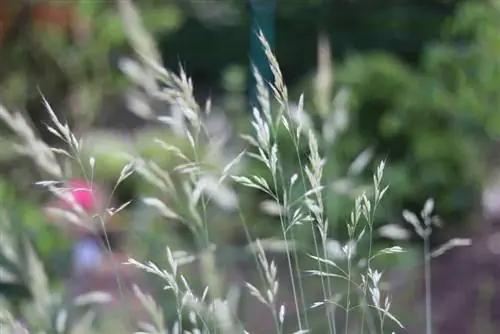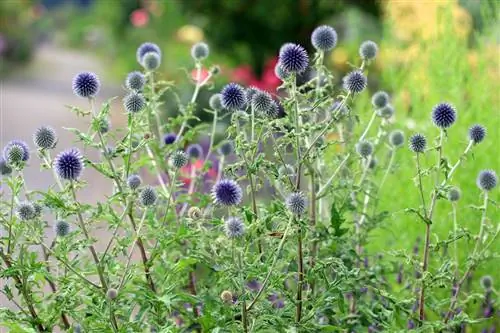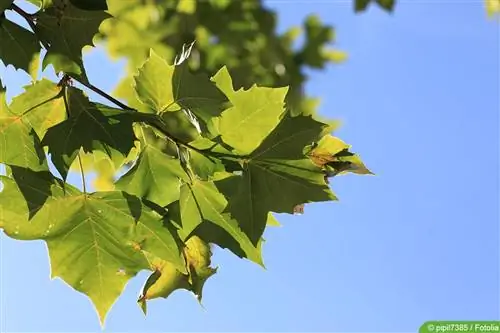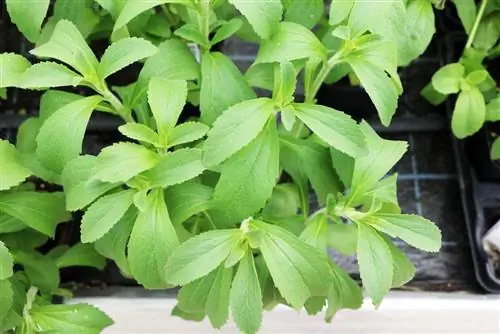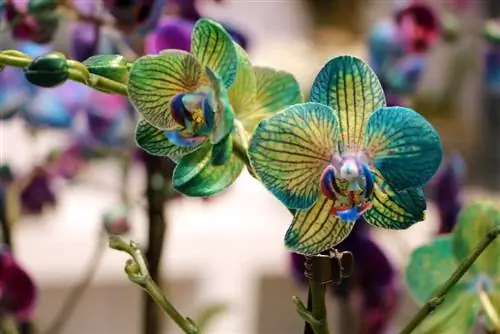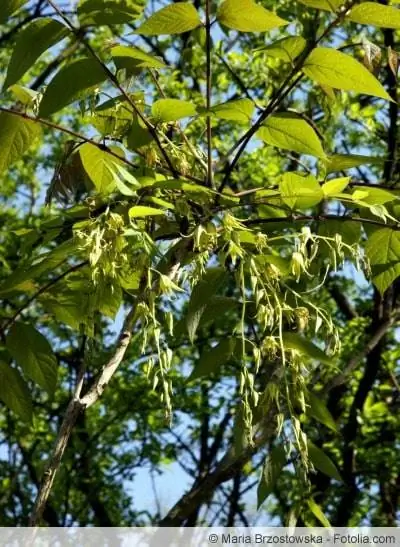- Author admin [email protected].
- Public 2023-12-17 03:39.
- Last modified 2025-06-01 06:48.
With blue-rayed oats (Helictotrichon sempervirens), also known as blue-rayed meadow oats, you can bring an impressive evergreen beauty into your garden that you can enjoy all year round, because this type of grass is wintergreen and has an intense blue-grey color Leaves. With the flowering period from July to the end of August, it supports the flowering perennials with impressive yellowish flowers, the stems of which are over a meter high. As a sun worshiper, it can also be placed in full sun locations and requires little care. Here we give you helpful tips on how you can easily cultivate the adaptable plant in your perennial bed.
Substrate and soil
Permeable, gravelly soil is ideal because it cannot tolerate waterlogging. This applies equally to summer and winter. It is advisable to mix some gravel and sand into the excavation when planting to create natural drainage. The blue oat belongs to the dry and steppe plants, it rarely competes with other perennials for nutrients or water and can be combined excellently with many plants. The frugal plant can receive some compost or some horn shavings in the excavation, which also ensures its food supply. Blue oats are available all year round and can also be planted at any time. However, planting should usually take place in spring or autumn. After the excavation has been filled and compacted, watering should be moderate.
- Dig the planting hole about twice as wide and deep as the rootstock is big
- enrich the excavation with gravel or untreated clay shards, so the soil remains permeable
Location
The blue oat is a sun worshiper and grows optimally in locations that give it this sun. This makes it easy to cultivate in places that are otherwise considered problem locations because many plants get burned in the blazing sun. Due to its frugality, it can be easily placed on south-facing slopes, and sunbeds or stone beds are also gratefully accepted. There is no risk of permanently wet roots in these places. The wrong location can cause the plant to suffer or become susceptible to fungal diseases, so should be chosen carefully. However, in combination with plants that have similar requirements, it develops splendidly. Over time, the host can become wide, make sure that other plants are not too close, or separate the perennial in a timely manner.
- Place the grass in stone or steppe beds for loosening up or as a solitary plant
- Blue oats can be planted on a sloping embankment
- It comes into its own in combination with lavender, sage or catnip
- can also be used for green roofs
- good companion for rose bushes because it doesn't compete
- can be planted well in small groups of 3 - 4 plants
- do not put more than 3 plants per square meter
- Do not mulch under any circumstances
Plants
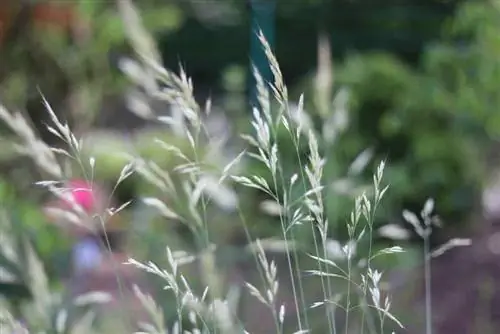
The blue oat is delivered as a perennial plant with a rootstock. Additional varieties such as “Saphirsprudel” or “Pendula” are available commercially as hanging blue oats. When purchasing, make sure that there is good root penetration without already blowing up the pot. If you want to cultivate the beautiful, evergreen plant as a solitary plant, you should try to purchase slightly larger young plants. To ensure that the prepared and cleared space does not appear bare, it is an excellent option to add annual quaking grass, which can easily be replaced as soon as the blue-throated oat host spreads further. When planting with other perennials or in small groups, consider a planting distance of around 60 cm, although individual planting in combination with other dry grasses can be preferred. Blue oats can also be grown excellently in a pot on the terrace. Since it is hardy, it does not need special protection in the event of frost.
- If temperatures are severely below zero in the pot, a garden fleece can be placed
- The young plants can be planted well in the rock garden, they adapt
- sandy soil is considered well tolerated because it is permeable to water
- Cut off the flower stems after flowering to strengthen the plant itself
- the host itself or the leaves should not be trimmed, they also serve as frost protection and remain steel blue even in winter
Watering and fertilizing
The frugal plant does not place high demands on it, and regular fertilization is not necessary. As a dry and steppe plant, the blue-throated oat does not require any time-consuming watering, even in dry phases. A little compost once a year is sufficient as fertilizer; mineral fertilizers should be avoided for dry grass.
Tip:
If you do want or need to water, use a watering can with a shower nozzle to distribute the water evenly. If you water in the evening, you can avoid sunburn from water droplets. Water only moderately.
Propagate
Like all perennials, blue oats can be propagated by dividing the rhizome or sowing the ripe, dry seeds. To divide, the mother plant is dug up and the rhizome is divided with a spade or a very sharp knife. The mother plant goes back into the ground. This procedure is also recommended if the plant is already very large. Thanks to rejuvenation, it will grow better again the following year. The separated young plant is placed in its new location and treated like a normal new dry grass perennial. For propagation by seed cultivation, the fully ripe seeds can be collected from the plant in August. Place 3 - 5 seeds in moist sand in the cultivation pot. The growing pot should be covered with foil and opened at least once a day to prevent mold from forming. The location should be bright and sunny. The first plants can appear after two to three weeks. As soon as they have reached a size of 8 to 10 cm, they can be put outside.
Tip:
If you plant two or three seed pots at the same time, there is a greater chance that enough young plants will grow.
Wintering
The perennial blue oat is hardy and does not require any special preparations for the winter. Like most types of grass, it survives frost and snow quite well as long as there is no waterlogging. Therefore, when planting, care must be taken to ensure that no moisture can remain in the soil, even in heavy rain and meltwater.
Diseases and pests
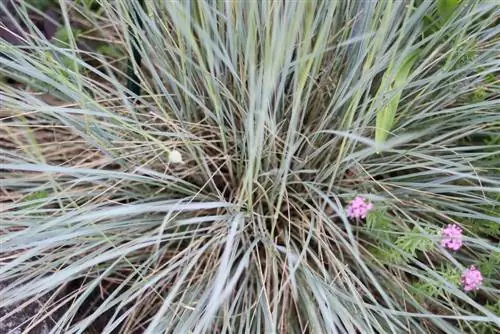
The easy-care, adaptable plant is not sensitive to diseases and pests. However, if the vegetation is too dense, fungal diseases can appear and quickly spread to other plants or be transmitted by them. Then a remedy must be found quickly. To do this, the affected areas should be generously thinned out. In most cases this will be enough; chemical control is hardly necessary. Due to its robust structure, the blue oats will grow extensively again the following year.
Conclusion
Grass perennials are beautiful, blue oats are particularly beautiful and should not be missing from any perennial bed. As an easy-care plant, even for problem areas, it can be planted in the blazing sun, in rockeries, as well as on embankments, where it will be a pleasant sight all year round with its striking blue leaves, an undemanding plant that will last for many years if placed optimally grows.

